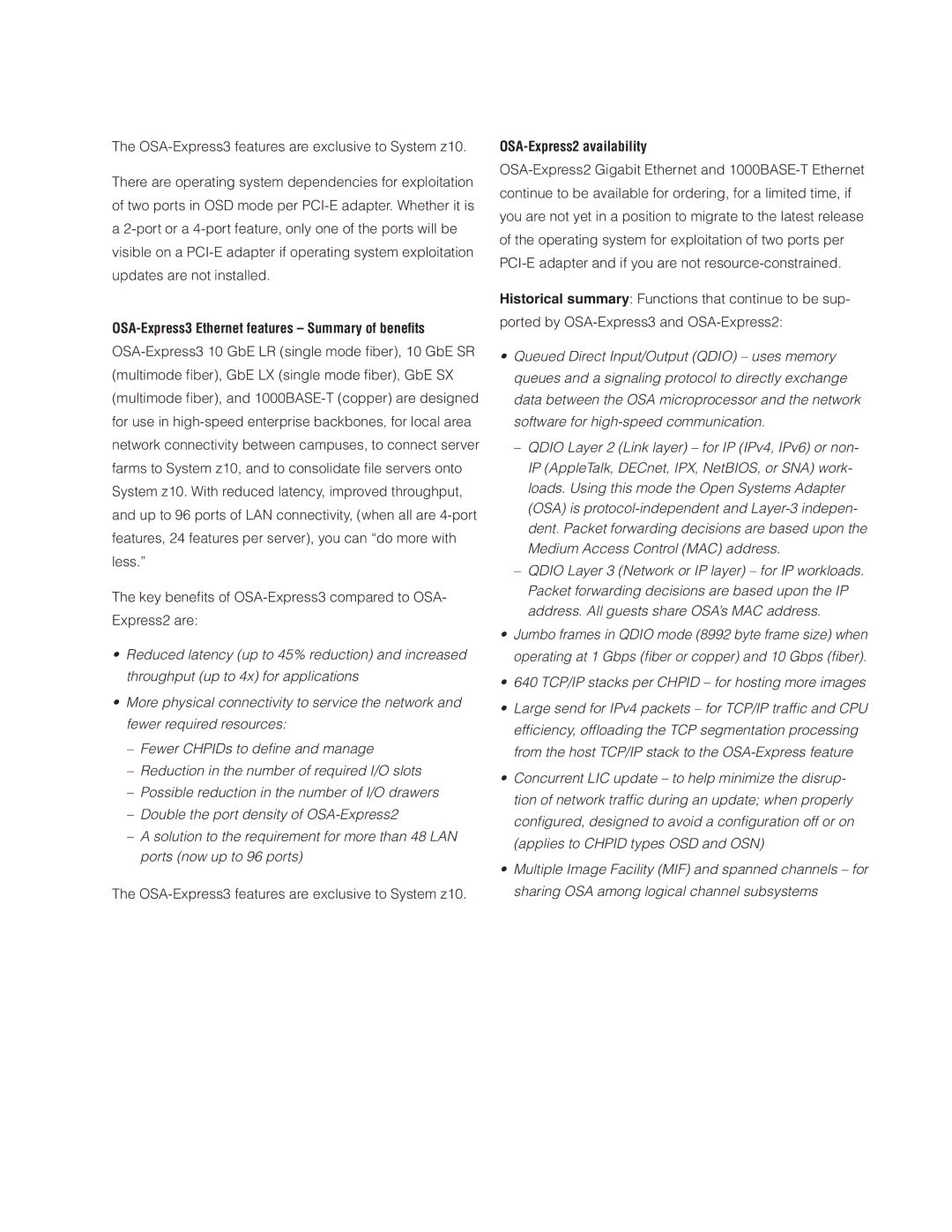The
There are operating system dependencies for exploitation of two ports in OSD mode per
OSA-Express3 Ethernet features – Summary of benefits
The key benefi ts of
•Reduced latency (up to 45% reduction) and increased throughput (up to 4x) for applications
•More physical connectivity to service the network and fewer required resources:
–Fewer CHPIDs to defi ne and manage
–Reduction in the number of required I/O slots
–Possible reduction in the number of I/O drawers
–Double the port density of
–A solution to the requirement for more than 48 LAN ports (now up to 96 ports)
The
OSA-Express2 availability
Historical summary: Functions that continue to be sup- ported by
•Queued Direct Input/Output (QDIO) – uses memory queues and a signaling protocol to directly exchange data between the OSA microprocessor and the network software for
–QDIO Layer 2 (Link layer) – for IP (IPv4, IPv6) or non- IP (AppleTalk, DECnet, IPX, NetBIOS, or SNA) work- loads. Using this mode the Open Systems Adapter (OSA) is
–QDIO Layer 3 (Network or IP layer) – for IP workloads. Packet forwarding decisions are based upon the IP address. All guests share OSA’s MAC address.
•Jumbo frames in QDIO mode (8992 byte frame size) when operating at 1 Gbps (fi ber or copper) and 10 Gbps (fi ber).
•640 TCP/IP stacks per CHPID – for hosting more images
•Large send for IPv4 packets – for TCP/IP traffi c and CPU effi ciency, offl oading the TCP segmentation processing from the host TCP/IP stack to the
•Concurrent LIC update – to help minimize the disrup- tion of network traffi c during an update; when properly confi gured, designed to avoid a confi guration off or on (applies to CHPID types OSD and OSN)
•Multiple Image Facility (MIF) and spanned channels – for sharing OSA among logical channel subsystems
